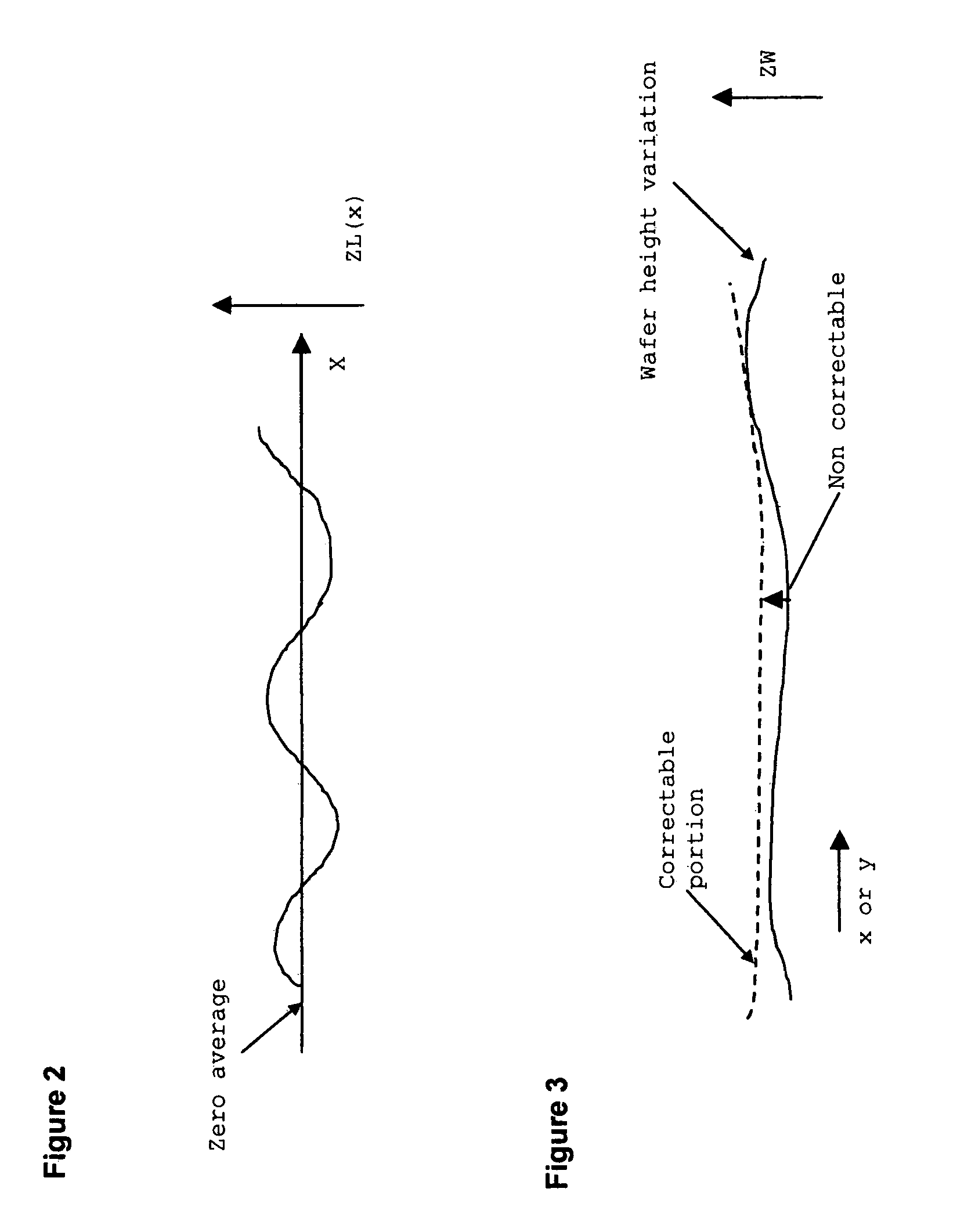Apparatus and process for determination of dynamic scan field curvature
a dynamic scan field and apparatus technology, applied in the field of semiconductor manufacturing, can solve the problems of reduced product yield, over-all focus budget, and difficult control of lithography processes
- Summary
- Abstract
- Description
- Claims
- Application Information
AI Technical Summary
Benefits of technology
Problems solved by technology
Method used
Image
Examples
first main embodiment
Discussion of First Main Embodiment
[0053]In accordance with the invention, Focusing Fiducials (FF) are exposed onto a wafer in such a manner that the effects of wafer height variations can be isolated and eliminated, and a true measure of dynamic scan FPD (SFPD) can be obtained.
[0054]A process flow diagram for the first Main Embodiment is shown in FIG. 11. A schematic of a reticle containing a (2 mx+1*2my+1) array of focusing fiducials is shown in FIG. 12. Details for the first Main Embodiment will be explained for a square exposure field (mx=my) although it is appreciated that the case of rectangular fields is a direct generalization from that description.
[0055]1. Provide Wafer
[0056]A resist coated wafer with wafer alignment marks disposed at 180° and 270° is provided (FIG. 13). The purpose of marks is to allow wafer to be inserted and aligned at two distinct notch angles that differ by +90° or −90° from one another. Depending on the scanner and FPD technology applied, the wafer no...
second main embodiment
Discussion of Second Main Embodiment
[0101]In the first Main Embodiment we have discussed in detail the practice of this invention to cases where the size of the scanned field (FX, FY) (FIG. 4) is smaller than or equal to the lesser of the slot width SW and maximum scan length SL. The present embodiment is practiced when FY (the interrogated field size in the Y direction) is greater than the maximum slot width, SW of FIG. 4. In terms of the focusing fiducials on the focusing fiducial reticle of FIG. 12, if we call the maximum number of FF's across the projected field in the X or cross scan direction NXmax and the required number of FF's in the Y or scan direction NY, when
NXmax<NY<2NXmax−1 (Equation 36)
we can apply the present embodiment. Equation 36 typically holds for scanner fields. FIG. 18 outlines the steps for carrying out the present embodiment.
[0102]Provide Wafer, Load and Align Wafer
[0103]The first two operations for the second Main Embodiment (listed as “provide wafer...
PUM
| Property | Measurement | Unit |
|---|---|---|
| wavelengths | aaaaa | aaaaa |
| notch angles | aaaaa | aaaaa |
| notch angles | aaaaa | aaaaa |
Abstract
Description
Claims
Application Information
 Login to View More
Login to View More - R&D
- Intellectual Property
- Life Sciences
- Materials
- Tech Scout
- Unparalleled Data Quality
- Higher Quality Content
- 60% Fewer Hallucinations
Browse by: Latest US Patents, China's latest patents, Technical Efficacy Thesaurus, Application Domain, Technology Topic, Popular Technical Reports.
© 2025 PatSnap. All rights reserved.Legal|Privacy policy|Modern Slavery Act Transparency Statement|Sitemap|About US| Contact US: help@patsnap.com



